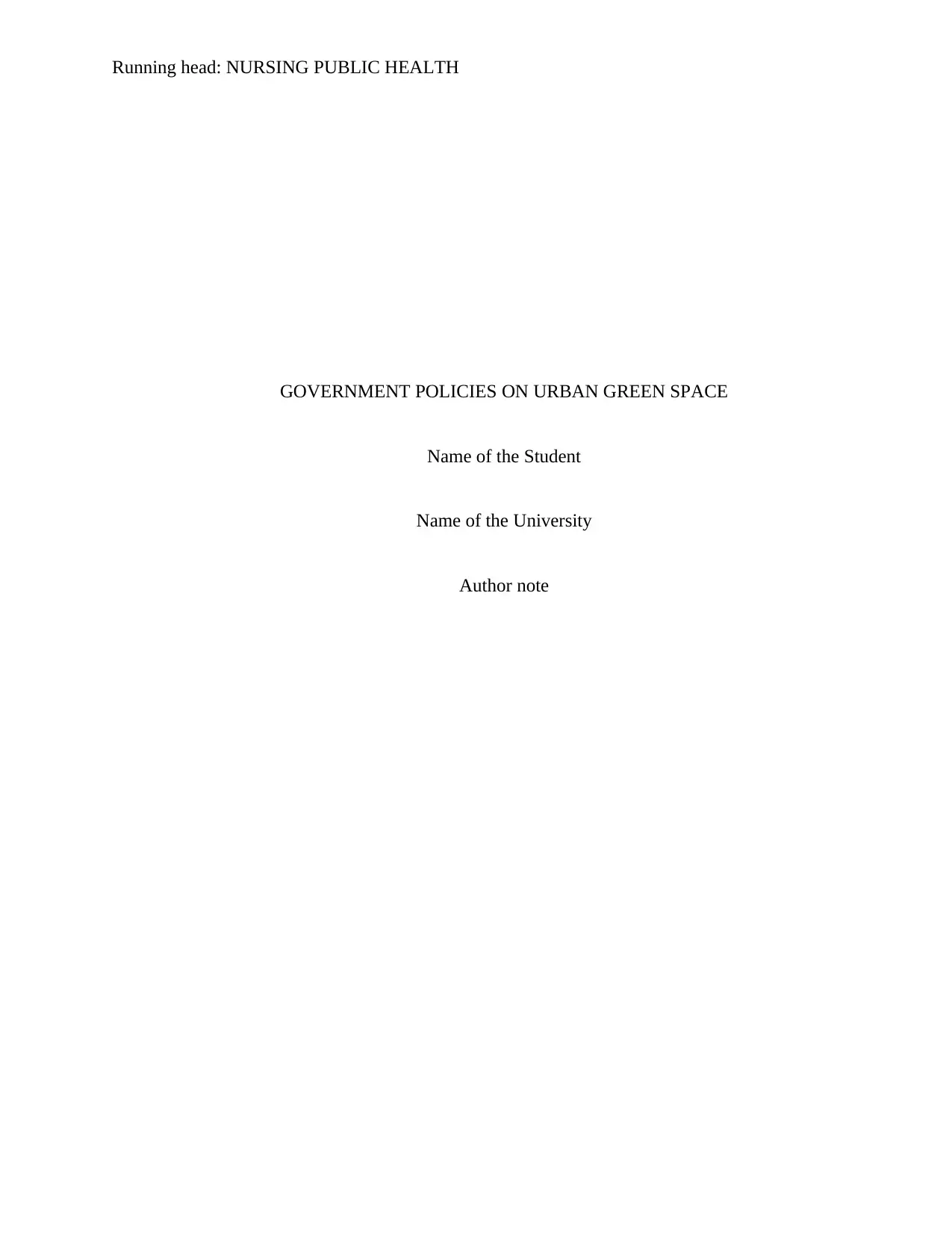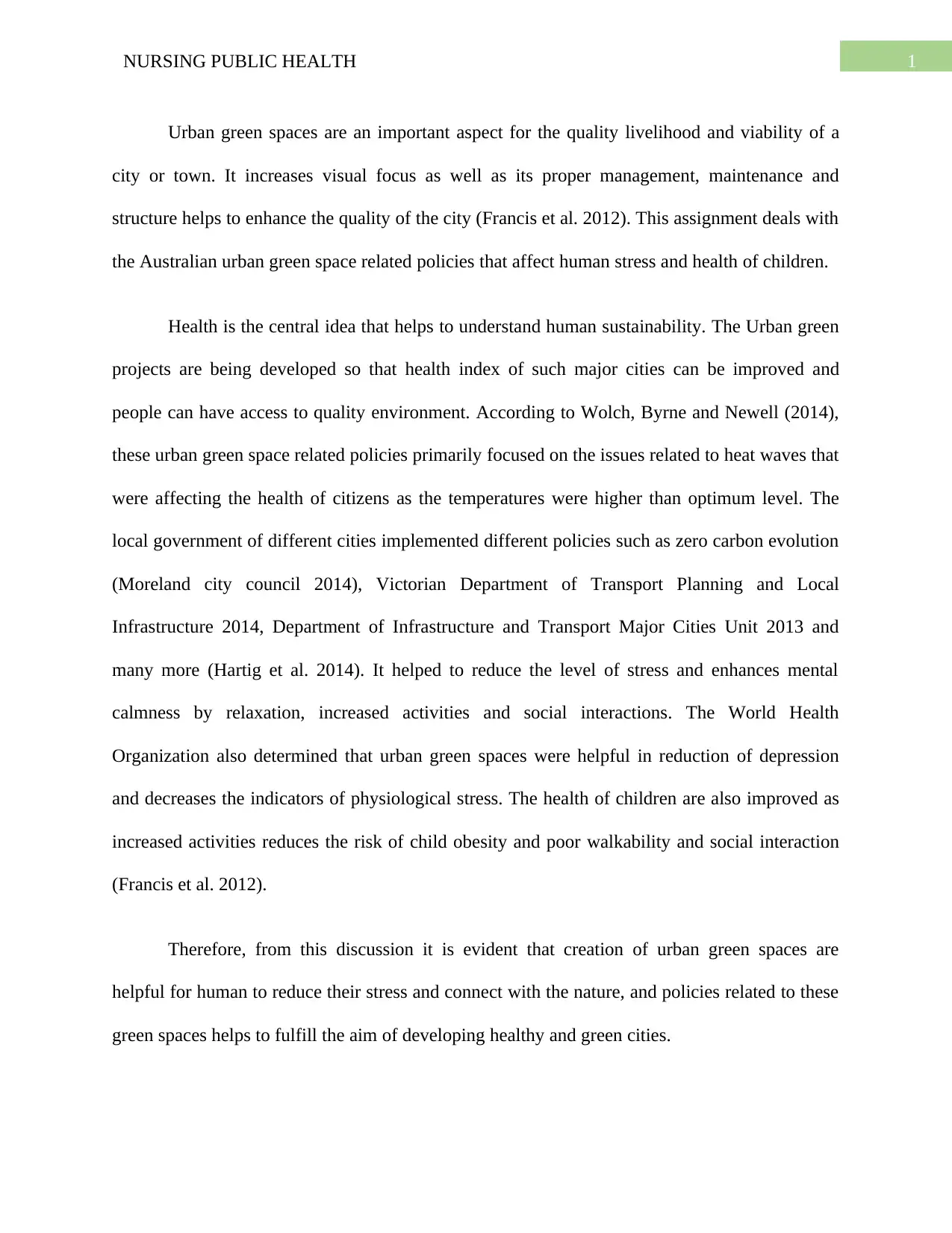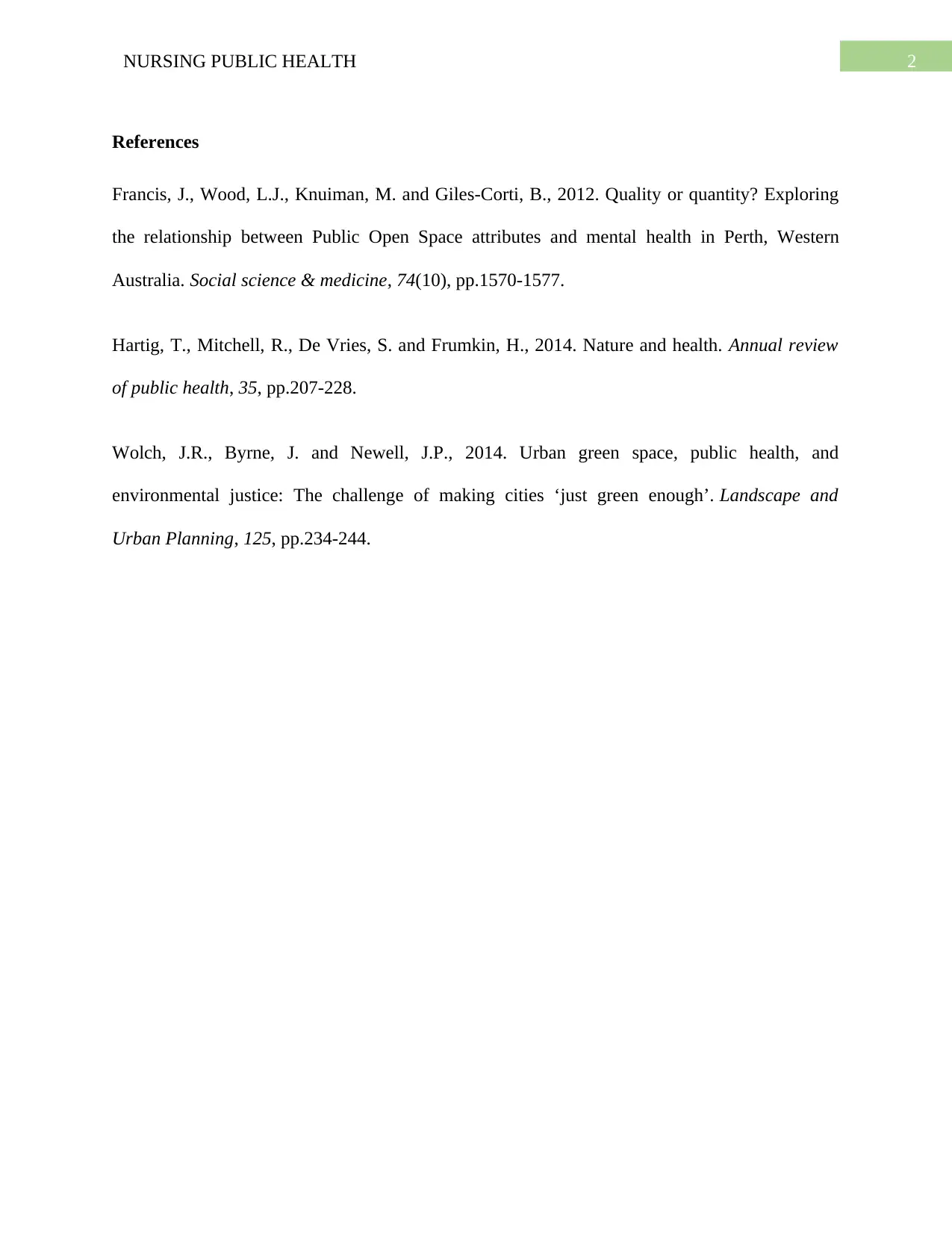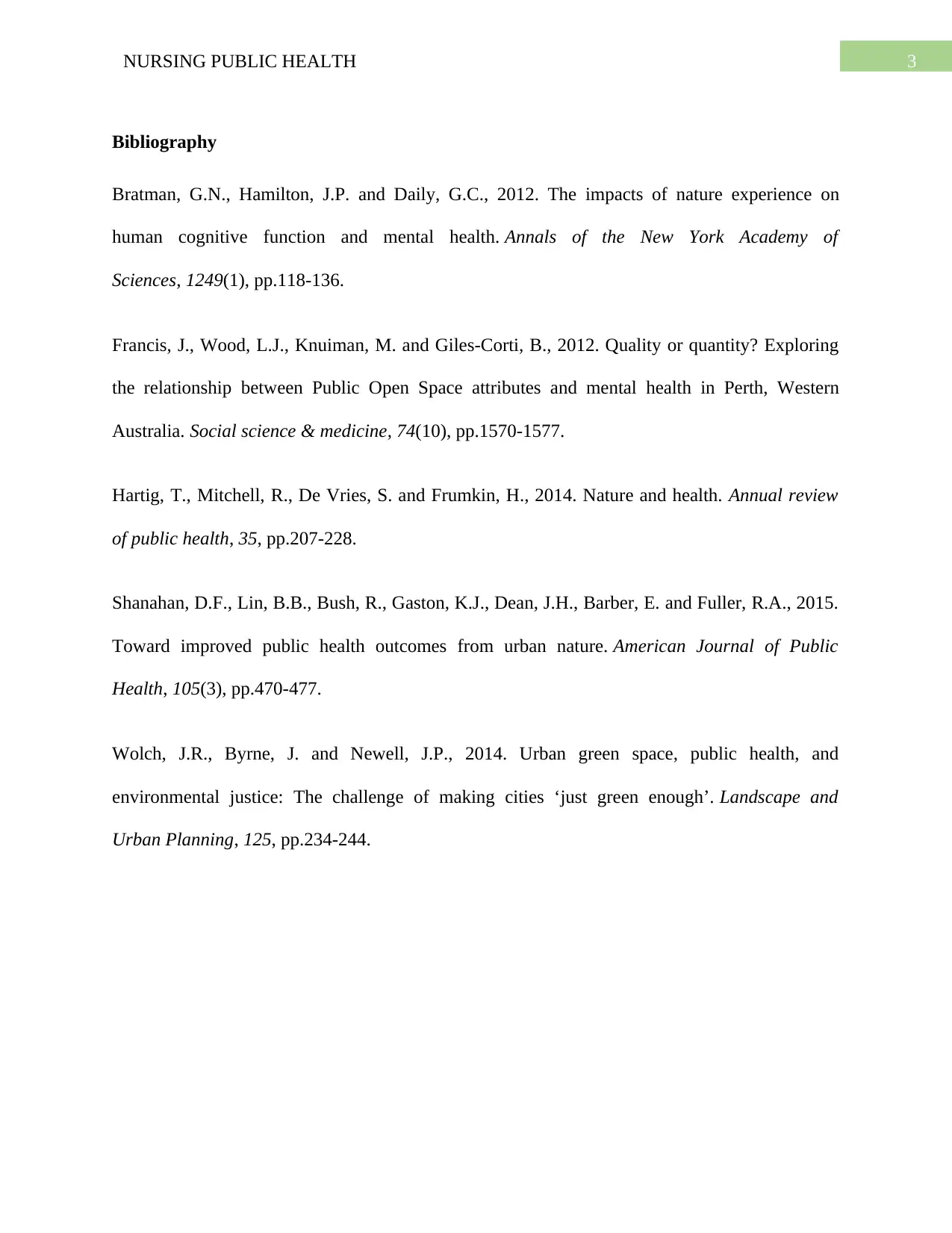Analyzing Government Policies on Urban Green Space and Public Health
VerifiedAdded on 2023/06/12
|4
|712
|297
Essay
AI Summary
This essay examines the importance of urban green spaces for the quality of life in cities, focusing on Australian government policies related to these spaces and their impact on human stress and children's health. It highlights how urban green projects aim to improve the health index of cities by providing access to quality environments. The essay discusses various policies implemented by local governments to address issues like heat waves and promote mental calmness, increased physical activity, and social interactions. It references the World Health Organization's findings on the role of urban green spaces in reducing depression and physiological stress, as well as their positive effects on children's health by reducing obesity risks and promoting better social interaction. Ultimately, the essay concludes that urban green spaces are beneficial for human well-being, and policies supporting them are crucial for developing healthy and green cities. Desklib offers similar solved assignments for students.
1 out of 4






![[object Object]](/_next/static/media/star-bottom.7253800d.svg)